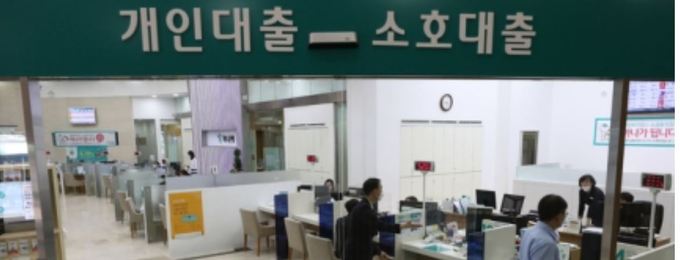
Bank lending rates continue to rise. This is because banks that have tightened loans amid rising market interest rates are stepping up interest rates one after another. The interest burden is expected to increase for end-users of loans, as well as for the’Young Kul (loan by attracting souls)’ and’Debt (stock investment in debt)’.
According to banknotes on the 31st, the average interest rate of home mortgage loans with principal and interest amortization method handled by KB Kookmin, Shinhan, Woori, Hana, and Nonghyup in December last year was 2.85% per year, 0.07% point compared to the previous month (2.78%). Rose. The general credit loan rates of the five major banks also averaged 3.08% per year, up 0.41 percentage points from the previous month (2.67%).
The rise in loan interest rates is largely due to the impact of banks raising loan interest rates in line with the financial authorities’ stance to manage the total amount of household loans while the market interest rate continues to rise. In December of last year, the 3-month interest rate for bank bonds (AAA) rose 0.12 percentage points from the previous month to 0.77%, and the rate for 1-year bank bonds (AAA) also increased by 0.02 percentage points. If the market interest rate rises, the cost of financing for banks becomes high, which can be a factor that raises the loan rate. In addition, as banks began to reduce preferential interest rates due to the authorities’ “loan confinement period”, the loan interest rate became more upbeat.
According to the BOK, the interest rate on household mortgage loans for all deposit banks rose by 0.03 percentage points in December last year to 2.59%, the highest in one year and five months since July 2019 (2.64%). General credit loan interest rate jumped 0.49 percentage points from the previous month to 3.50%, the largest jump in eight years and three months since September 2012 (0.66 percentage points).
The problem is that there is a possibility that the market interest rate will rise in the future. Kim Su-jeong, senior researcher at Hana Financial Management Research Institute, said, “If the US Treasury bond rate surges further due to the announcement of the mid- to long-term fiscal plan of the US Joe Biden administration and the disappointment of the Fed’s monetary policy, it is important to note that pressure to increase interest rates may emerge in Korea. Said. In particular, as about 70% of bank household loans are subject to variable rates, there is a concern that interest burdens from rising interest rates may increase further. As of December of last year, the proportion of household loans at bank variable rates was 68.1%, which was slightly reduced from the previous month (69.2%), but it has increased from a year ago (51.6%).
Reporter Kim Hyun-joo [email protected]
Photo = Newsis
[ⓒ 세계일보 & Segye.com, 무단전재 및 재배포 금지]
